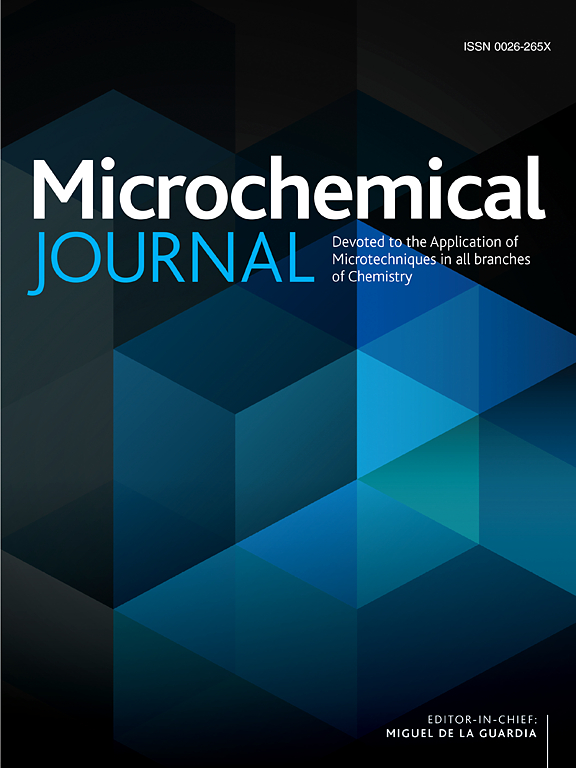具有有序微障碍物的超低纵横比微通道中二次流增强用于高通量细胞聚焦
IF 4.9
2区 化学
Q1 CHEMISTRY, ANALYTICAL
引用次数: 0
摘要
低纵横比微通道的几何约束对二次流的调控在细胞分离、血浆提取和单细胞分析中起着至关重要的作用。然而,对于有序微障碍物在两种常见通道构型(直线和弯曲)下促进二次流加速的机制,尚未进行系统的研究。在这项研究中,我们提出了一种惯性微流体系统,可以精确控制超低展弦比(AR = 1:9)微通道内的二次流。通过在半圆形和直线型微通道中引入相同数量的微障碍物,我们观察到不同灌注率下二次流的不同加速模式。此外,每个通道的设计在广泛的流量范围内都具有独特的混合效率优势。值得注意的是,高通量粒子操作在两种修改的配置中都实现了,在宽通量谱(范围从2 × 106到4 × 106细胞/分钟)内有效靶向癌细胞。本研究中用于增强二次流的方法为低纵横比微通道的设计提供了有价值的见解,突出了它们的易用性、高吞吐量能力和显著的适应性。该研究为未来探索创新通道设计铺平了道路,旨在进一步提高惯性微流体的精度和效率。本文章由计算机程序翻译,如有差异,请以英文原文为准。

Secondary flow enhancement in ultra-low aspect ratio microchannels with ordered Micro-obstacles for high-throughput cell focusing
The regulation of secondary flow through geometric confinement in low aspect ratio microchannels plays a crucial role in cell separation, blood plasma extraction, and single-cell analysis. However, a systematic investigation comparing the mechanisms of secondary flow acceleration encouraged by ordered micro-obstacles in two common channel configurations—straight and curved—has not been fully explored. In this study, we present an inertial microfluidic system to enable precise control of secondary flows within ultra-low aspect ratio (AR = 1: 9) microchannels. By introducing an identical number of micro-obstacles into both semicircular and straight microchannels, we observe distinct acceleration patterns of secondary flow at varying perfusion rates. Furthermore, each channel design demonstrates unique advantages in mixing efficiency across a broad range of flow capacities. Notably, high-throughput particle manipulation is achieved in both modified configurations, with effective targeting of cancer cells across a wide throughput spectrum (ranging from 2 × 106 to 4 × 106 cells/min). The approach employed to enhance secondary flow in this work provides valuable insights into the design of low aspect ratio microchannels, highlighting their ease of use, high throughput capabilities, and significant adaptability. This research paves the way for future explorations into innovative channel designs aimed at further improving the accuracy and efficiency of inertial microfluidics.
求助全文
通过发布文献求助,成功后即可免费获取论文全文。
去求助
来源期刊

Microchemical Journal
化学-分析化学
CiteScore
8.70
自引率
8.30%
发文量
1131
审稿时长
1.9 months
期刊介绍:
The Microchemical Journal is a peer reviewed journal devoted to all aspects and phases of analytical chemistry and chemical analysis. The Microchemical Journal publishes articles which are at the forefront of modern analytical chemistry and cover innovations in the techniques to the finest possible limits. This includes fundamental aspects, instrumentation, new developments, innovative and novel methods and applications including environmental and clinical field.
Traditional classical analytical methods such as spectrophotometry and titrimetry as well as established instrumentation methods such as flame and graphite furnace atomic absorption spectrometry, gas chromatography, and modified glassy or carbon electrode electrochemical methods will be considered, provided they show significant improvements and novelty compared to the established methods.
 求助内容:
求助内容: 应助结果提醒方式:
应助结果提醒方式:


